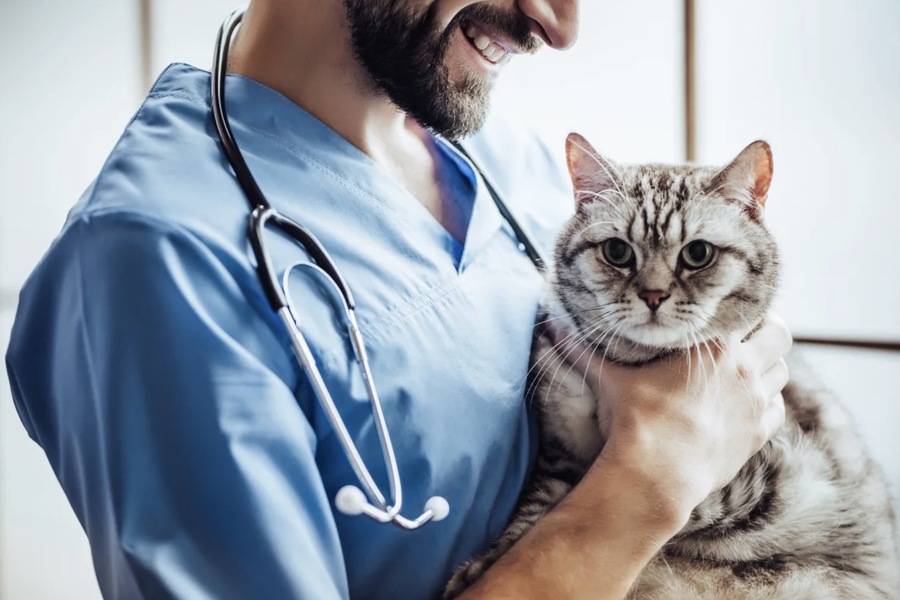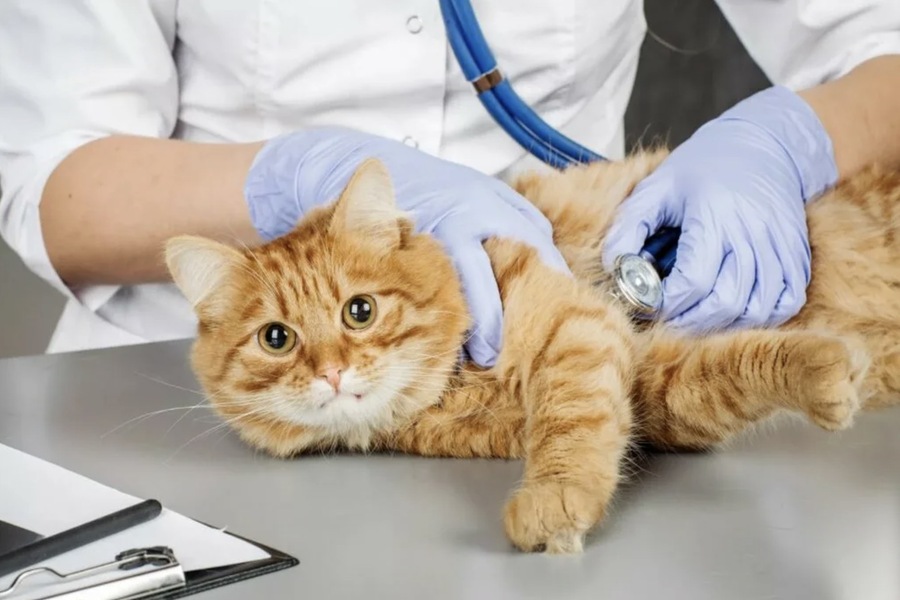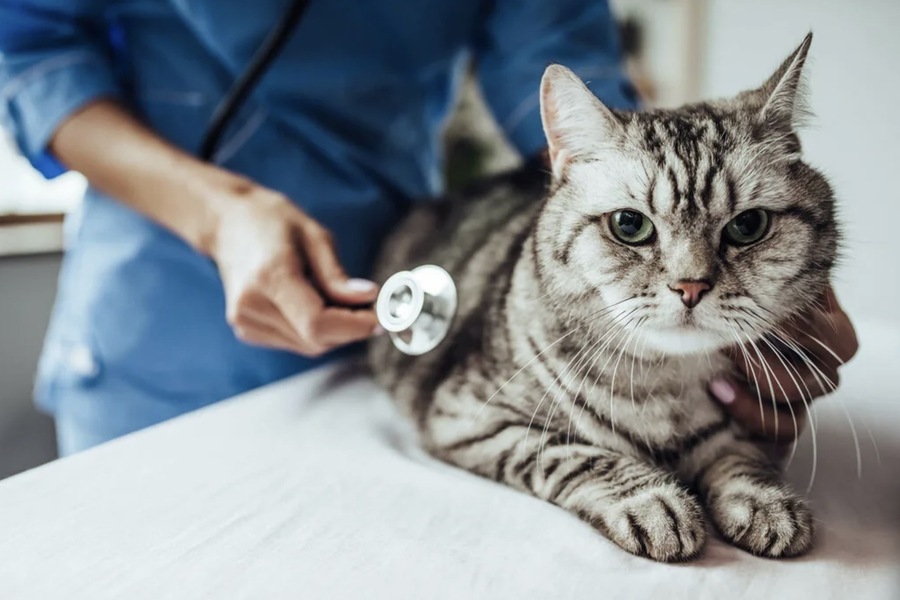Dissecting osteochondritis (DOC) is a rare but significant joint disorder in cats, characterized by a disruption in the normal development of chondrocytes (cartilage cells) within the growth zone of epiphyseal (articular) cartilage. In healthy animals, this cartilage plays a crucial role in bone development, facilitating both the growth and shaping of bone ends. It also contributes to joint mobility by providing a smooth surface for bones to glide over each other during movement. If you suspect your cat might have DOC, consulting the best vet Dubai can help ensure accurate diagnosis and effective treatment. This article explores DOC in cats, diving into its causes, symptoms, diagnostic methods, treatment, and prevention.
What is Dissecting Osteochondritis?
Dissecting osteochondritis, also known as osteochondrosis dissecans (OCD), occurs when chondrocytes in the cartilage fail to differentiate and organize properly. This results in localized cartilage breakdown, where a small fragment or flap of cartilage becomes loose or separated from the underlying bone. While rare in cats, DOC has been noted to cause joint instability and, in some cases, pain and lameness, especially following exercise.
Causes of Dissecting Osteochondritis in Cats
DOC in cats is typically the result of multiple interacting factors, including genetics, trauma, nutritional deficiencies, and infection. Here’s a breakdown of some of the main contributors to this condition:
- Genetics and Breed Predisposition
DOC is more common in certain cat breeds, particularly those with genetic traits related to joint structure. For instance, osteochondrodysplasia, a cartilage development disorder, is prevalent in Scottish Fold cats due to a fold gene associated with their ear structure. Cats with both parents carrying this gene are at a higher risk. - Trauma
Injuries that place undue stress on a cat’s joints can lead to DOC. Repeated or severe trauma may disrupt the cartilage’s development or structure, leading to localized degeneration. - Nutrition
Poor diet and nutritional imbalances can influence cartilage health. Deficiencies in essential nutrients that support joint health can exacerbate the risk of DOC, particularly during a cat’s growth phase. - Infections
In some cases, infections can affect the joint cartilage, either directly or by compromising the immune system. Although less common, this factor can predispose cats to DOC.

Clinical Symptoms of Dissecting Osteochondritis in Cats
DOC in cats can often be subtle. The clinical signs may vary based on the severity of cartilage damage, the joint affected, and the animal’s activity level. Typical symptoms include:
Lameness: Cats with DOC may exhibit lameness, especially after exercise or vigorous movement. The lameness often appears intermittently, worsening after physical activity.
Pain and Crepitus: DOC can cause acute joint pain and crepitus (a crackling or popping sensation) within the affected joint. This pain may become noticeable when the cat moves or tries to bear weight on the affected limb.
Swelling of the Joint: Swelling in the affected joint is another symptom, signaling inflammation due to cartilage damage.
Muscle Atrophy: With time, cats with DOC may experience muscle atrophy in the limb associated with the affected joint, as the pain and discomfort limit normal movement and weight-bearing on that leg.
Diagnostic Approach to Dissecting Osteochondritis in Cats
For an accurate diagnosis, veterinarians follow a multi-step approach that includes imaging and physical assessment. Given the rarity of DOC in cats, a precise diagnosis is essential to rule out other joint conditions that may exhibit similar symptoms.
- X-ray Imaging
An X-ray of the affected joint, typically in two projections, is the initial step. However, DOC-related changes might not always be visible in a standard X-ray, especially in early stages or cases where the cartilage damage is minor. - Advanced Imaging
If X-rays do not show conclusive signs, more detailed imaging methods, such as computed tomography (CT) scans or magnetic resonance imaging (MRI), may be employed. These provide higher-resolution images, allowing a better view of joint structures and potential cartilage damage. - Arthroscopy
Arthroscopy is a minimally invasive procedure that involves inserting a small camera into the joint to directly observe the cartilage. This procedure can be especially useful in diagnosing DOC when other imaging methods are inconclusive.
Risk Factors for DOC in Cats
While DOC can occur in any cat, several factors have been identified as potential risk indicators:
Age and Gender: DOC is most commonly observed in young cats, typically between the ages of 4 and 10 months, when growth is at its peak.
Breed Susceptibility: As mentioned earlier, Scottish Fold cats and other breeds with cartilage-related genetic traits are more likely to develop DOC, especially if both parents carry the fold gene.
Treatment Options for Dissecting Osteochondritis in Cats
The primary goal in treating DOC is to alleviate pain, restore joint function, and prevent further complications. The treatment options generally include surgical and conservative approaches.
- Surgical Treatment: Arthrotomy or ArthroscopyIn cases with a loose cartilage fragment or flap, surgery may be recommended to remove the damaged cartilage. This can be done either through a small incision (miniarthrotomy) or via arthroscopy, which is less invasive and involves smaller incisions.
- Conservative Pain Therapy
Post-surgery, cats may require pain management. Medications such as anti-inflammatory drugs or pain relievers are often prescribed to minimize discomfort and promote healing. - Rehabilitation Therapy
Following surgery or conservative treatment, cats often benefit from a structured rehabilitation plan. This may include controlled exercise, physical therapy techniques, and gentle stretches to restore mobility.
Preventive Measures for Dissecting Osteochondritis in Cats
While DOC cannot always be prevented, certain measures can reduce the risk or manage symptoms in predisposed cats:
- Weight Management
Maintaining an optimal weight is crucial, as excess weight can place added stress on the joints, exacerbating lameness and other symptoms in cats with DOC. - Controlled Exercise
Following surgery or during rehabilitation, it’s essential to limit strenuous activity. Walking on a leash and gradually increasing activity levels after rest can help in the recovery process. - Balanced Diet
Feeding a low-calorie, nutritionally balanced diet supports joint health. Nutrients such as iron, phosphorus, iodine, calcium, B vitamins, and tocopherol (vitamin E) are particularly beneficial. Specialized cat foods designed for musculoskeletal health may also be considered, especially for breeds at higher risk. - Regular Veterinary Checkups
Routine checkups can help catch early signs of DOC and ensure proper joint health through preventive care and dietary adjustments.

Potential Complications if Untreated
If left untreated, DOC can lead to several complications that affect both the joint and surrounding structures:
The disease may progress from primary osteochondrosis to a secondary, degenerative form of osteoarthritis, resulting in chronic pain and further joint deterioration.
Increased Lameness and Muscle Atrophy
As the cartilage fragment moves within the joint, it can worsen lameness and muscle atrophy due to continued discomfort and joint instability.
Systemic Effects
In some cases, DOC can extend to other joints and limbs, leading to a widespread impact on the cat’s mobility and overall quality of life.
Prognosis
The prognosis for cats with DOC largely depends on the joint affected, the severity of the condition, and how promptly and appropriately treatment is administered. With early diagnosis and effective treatment, many cats experience a significant reduction in pain and improved joint function. However, ongoing care and management are often necessary to maintain the benefits and prevent recurrence.
Conclusion
Dissecting osteochondritis is a complex joint disease that, though rare in cats, can greatly impact an affected animal’s quality of life. Understanding the disease’s causes, symptoms, and treatment options can help cat owners and veterinarians work together to manage DOC effectively. With early diagnosis, appropriate treatment, and preventive care, many cats can lead comfortable, active lives despite this challenging condition.

